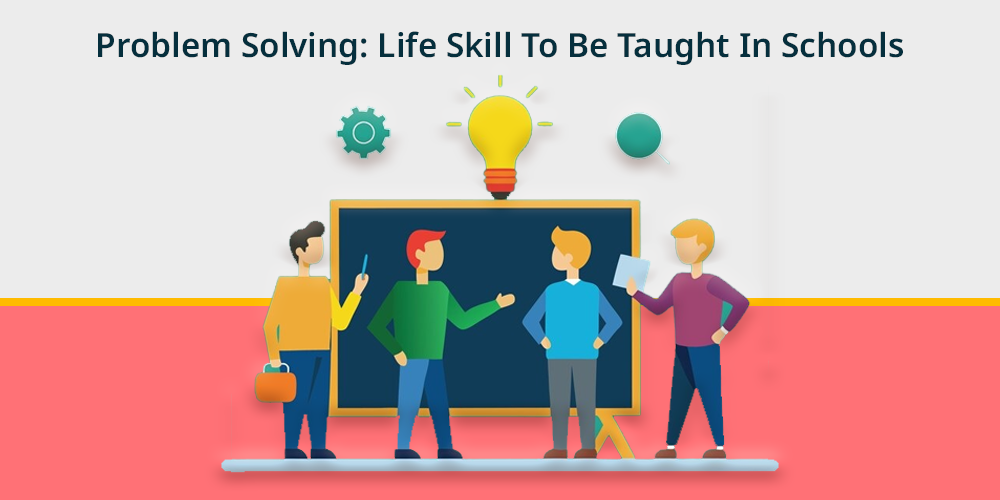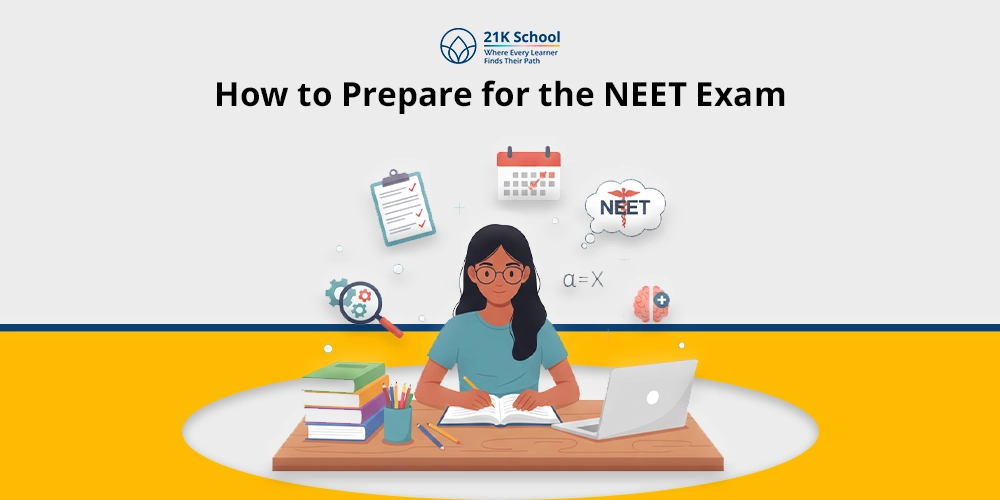
Problem-solving is a critical life ability that maintains independence simultaneously with producing innovation and showing endurance.
Educating students about handling their obstacles through decision-making prepares them both for their academic tests and an effective life experience.
The educational systems focusing on rote learning are quite outdated. The theoretical approaches that exist in current society no longer provide enough educational effectiveness.
Read more on Indian Education System problems for an insightful perspective on the same.
However, academic achievements continue being vital. Therefore, students need equal or superior levels of problem-solving skills coupled with creative thinking abilities to succeed.
This article sheds light on the urgency of implementing problem solving strategies in the curriculum along with its benefits for students.
The piece ends with suggestions for bridging the gaps between students with current structure and the upcoming one.
Contents
Importance of Problem Solving
1. General Virtues
When individuals solve problems these core human values including patience, and perseverance along with analysis and ethical decision-making develop.
The educational process develops a perspective which chooses comprehension above avoidance and questions over confusions.
Students who learn to meet challenges instead of avoiding them become more resilient. Therefore, they gain effective coping tools to handle unforeseen situations in life along with promoting skill-based education.
2. Career Betterment
Contemporary hiring companies search specifically for adaptable workers who can make quick decisions leading to efficient solutions.
Problem-solving is the essential foundation that supports the achievements of software engineers, marketers, and nurses during their work.
Early integration of this ability in school education provides students better market advantages and guides them straight to their careers.
Is your child interested in games? Explore further to find Is Studying Game Development a Promising Career Path ? And help your children find the right career path for themselves.
3. Societal Advancement
Community growth depends on innovative advancement as the ability to solve challenges produces both.
Problem-solving develops students with capable thinking to solve major social problems including climate change, economic instability, and social inequality.
This consecutively promotes educational equity. The students transition from sitting back to taking action as active participants instead of mere spectators.
4. Personal Development
Individual development directly corresponds to how well someone handles challenging situations that life presents.
Through this education students master risk evaluation techniques, emotional control practices, and clear methods to respond to obstacles.
The combination of academic achievements and healthy life perspectives results from their learning experience.
Here are some of the other personality development tips for students that make them presentable in the society.
How does Problem Solving Help Students?
1. Acing In Academics
Academic achievement depends on students’ ability to solve problems. Students must perform analysis along with reasoning and synthesis activities within their classes of mathematics, science, and social studies.
The training in critical thinking produces students who outperform their peers in tests. They also develop deep learning abilities by turning simple memorization into complex exploration.
2. Developing Resilience
The controlled educational accessory of facing and resolving problems enables students to build both resilience and grit traits. Failure does not signify final defeat since it leads students toward acquiring new knowledge.
Academic and personal success depends on developing psychological fortitude that leads to a growth mindset.
Would you be shocked if I told you that there is a connection between coding and resilience? Let’s explore this relationship to develop the ability to bounce back in life, especially during adversities.
3. Growth In Career
Professional growth and occupational opportunities in the workplace become accessible because of better problem-solving abilities.
The ability to think critically and communicate effective solutions determines a professional’s chances for project leadership and team management roles.
This results in making influential decisions. The aptitude for problem-solving controls both professional advancement along with employee contentment.
4. Social Sensitivity
Problem-solving surpasses individual logic to combine the elements of empathy together with perspective-taking skills thus cultivating social sensitivity.
Student collaborations regarding community issues as well as classroom conflicts help students develop social responsibility and emotional intelligence.
This helps them to form a healthy society and to become participative citizens.
5. Fostering Healthy Relationships
Teamwork and friendship development among people requires both negotiation and compromise between individuals. Training in problem-solving enables students to develop communication abilities with conflict resolution skills.
This lets them maintain healthy relationships between people. Children develop skills that allow them to listen attentively while performing fair mediation and being more aware friends.
The two most crucial relationships in a student’s life are with parents and educators. Let’s explore these two relationships with parent-child relationship and teacher-student bonding.
Also Read, How to Improve Problem Solving Skills ?
Mitigating Gaps To Incorporate Problem Solving In Education
1. Practical Approach to Learning
Educational organizations must discard traditional blackboard instruction when teaching problem-solving abilities.
The curriculum should have case study modules as well as hands-on tasks and real-life practical examples for complete integration.
Educating students to be curious takes them toward better participation levels and deeper comprehension.
2. Field Work and Simulations
Simulations, role plays, and fieldwork offer dynamic learning opportunities. Students can take part in mock tests in addition to business simulations or community service work.
This requires them to evaluate situations while working together to find solutions before proposing their recommendations. Just like they would in actual professional environments.
3. Collaborative Teaching
Collaborative learning enables students to combine information across different subjects when resolving complex challenges.
Environmental concerns require knowledge from the fields of science together with economics and ethics to find suitable solutions.
The integration of teachers’ collaborative methods provides students with effective instructional examples of combined thinking.
4. Change In Mindset
Educational practitioners along with policy makers must change their mindset on results toward concentrating on educational processes alone. Building the correct strategy matters more in problem-solving than achieving specific correct solutions each time.
The development of innovative thinkers requires support for experimental activities along with acceptance of mistakes. These approaches would result in inculcating an entrepreneurial mindset in students.
5. Alignment With Subjects
Problem-solving as a standalone topic should become integrated throughout all academic fields of study. The school curriculum can connect mathematical problems to real-world budget challenges.
They can also offer simulations for historical conflict resolution and teaching students to write about contemporary matters in language classes.
Final Thoughts
Problem-solving education serves both the educational domain and societal requirements. Students who learn this essential skill will become resilient, and compassionate as they face upcoming life challenges.
Today, society runs on competency-based learning. Student survival in the uncertain future will depend heavily on having problem-solving as their core educational capability.
The truth is that problem solving requires immediate integration into education systems so that our future does not suffer.


